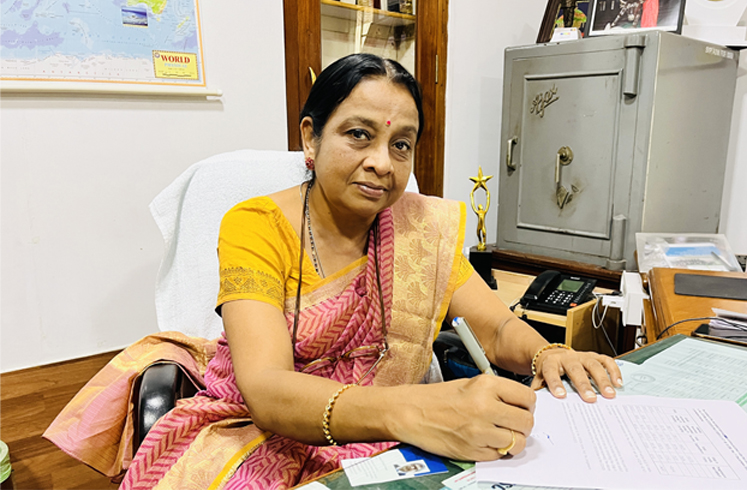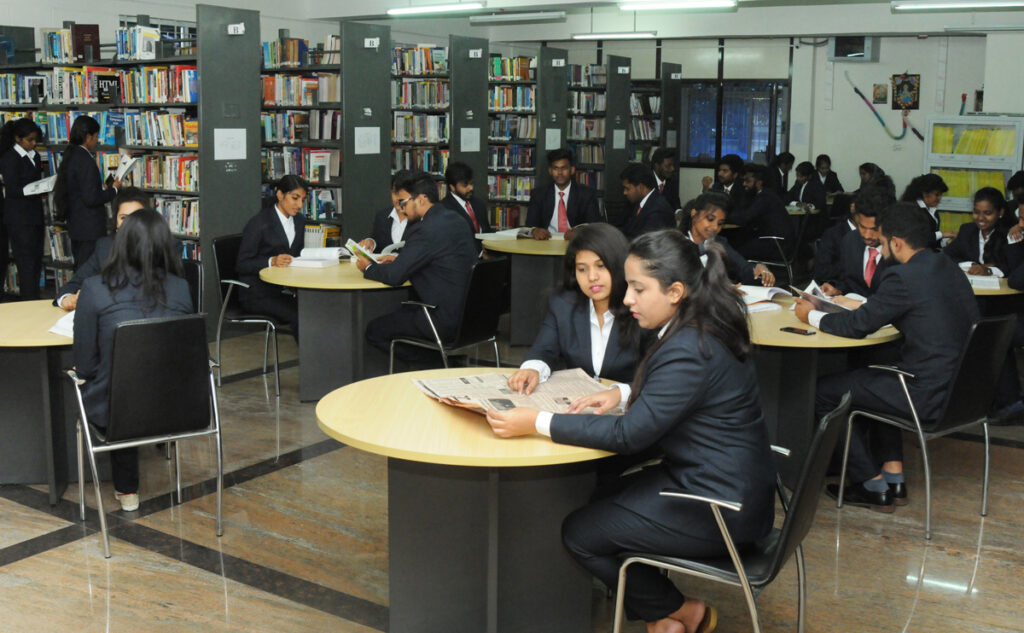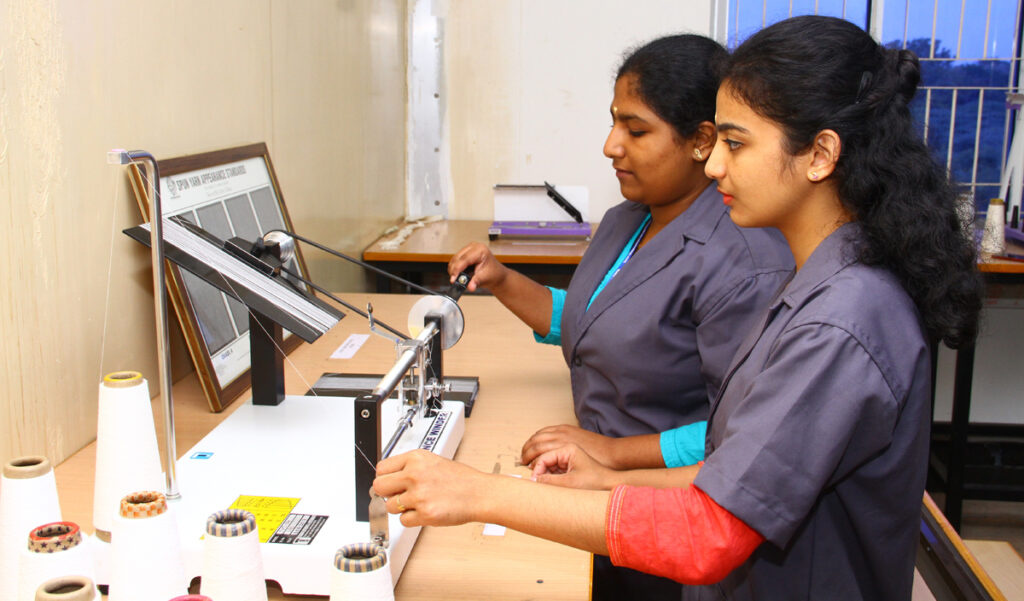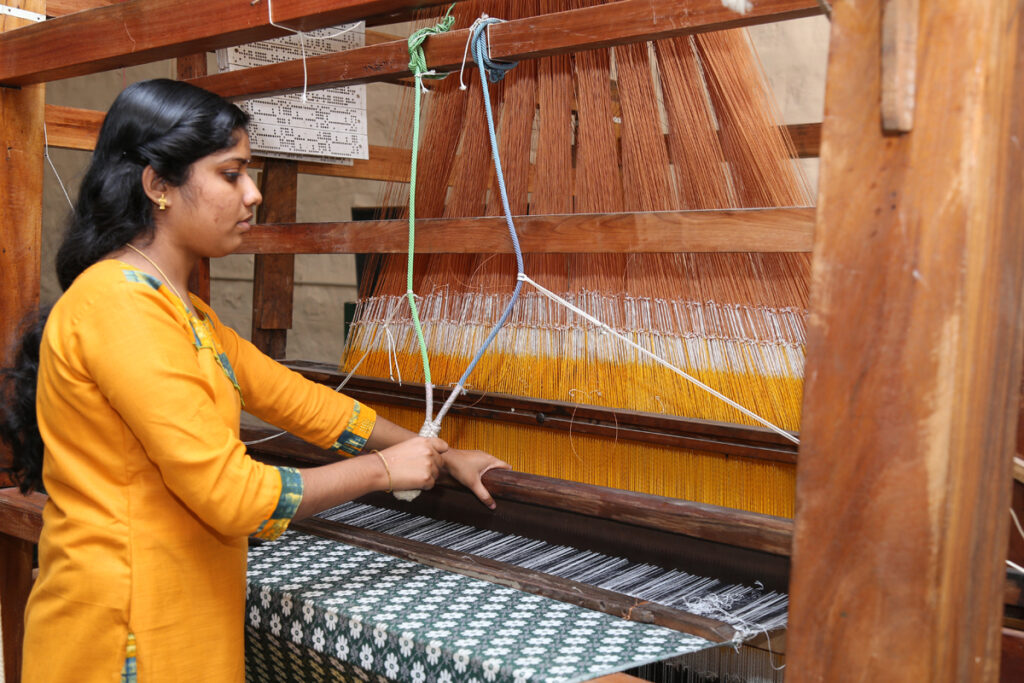Sardar Vallabhbhai Patel International School of Textiles and Management (SVPISTM) has made a distinct mark for itself as an educational institution specializing in providing comprehensive education, training , consultancy and research in textile science and management. Established in 2002 under the Ministry of Textiles, GOI, SVPISTM is dedicated to addressing the escalating demand for skilled professionals within the constantly evolving textile industry landscape.

We caught up with Dr. P. Alli Rani, Director of SVPISTM, in the textile school located in Coimbatore. Her distinguished career began with the Indian Economic Service (IES), a specialized cadre recruited to conduct economic analysis and formulate policy recommendations in the Central Ministries and adjunct offices.
She joined the Indian Railway Accounts Service in 1986 handling finances of the Indian Railways. She has had stints as Director-Finance in BSNL and Executive Director – Finance CONCOR. Subsequently, she was elected to the Board of Directors of CONCOR in 2009 by the Public Enterprises Selection Board (PESB) and took over as the Director – Finance of the company.
Dr. Alli Rani had also served as the Chairman-cum-Managing Director of the Cotton Corporation of India (CCI) (2017-2020). During her tenure CCI was upgraded into a ‘Miniratna’ PSU.
In an exclusive interview, Dr. Alli Rani gave detailed insights into the objectives of establishing the college, the courses offered, industry-student interaction, growth potential of the textile industry in the country and adding more courses in SVPISTM, among others.
Excerpts
Beginning the interaction with the key objectives behind the establishment of the institution, Dr. Alli Rani pointed out, “Agriculture and textiles are the two oldest industries in the world. These industries will be there till mankind exists. The Indian economy is mainly supported by these two industries. These two also have a long history in India. While you can find the textile industry around the world, there is something special about India. The raw material for this industry, i.e., natural fibres, are found in abundance in India. The maximum amount of cotton is produced in India. Then there are other fibres such as jute, silk and coir, all of which are found here in abundance.”

“Cotton is the most valued fibre, because whether in a cold or hot country, cotton is necessary. Being the leading producer of cotton, it is but natural that India is a global leader with a very large cotton industry. But unfortunately though we have lot of spinning and weaving mills we still cannot say we are the number one as far as the global textile industry is concerned,” she opined.
“For fostering technology which will help the textile industry to reach the leadership position in the world, we need to have professionals with an acute knowledge of various aspects of this industry. An industry has two parts, one is the management and another is the technology. While a lot of colleges in India offer textile technology courses, there was a lack of institutions about 20 years ago, of colleges that were offering higher education, particularly management courses in this field. If you look at the agriculture sector, you will see that every state has at least one university. Some even have two. So the awareness for agricultural sector came early. There needs to be formal education for understanding the nuances of the sector and professionals have to be created and trained, who will be catalysts in the progress of the textile sector.”

“Though textiles is the second largest employer, we require higher education in the field, because more value addition is made in this industry, and it is technology driven. There is a big role for managers who have to source the technology and find markets.”
Beginning with Management programs, the institution has now added undergraduate courses too. “From the feedback that we got from the industry, who wanted more professionals in the supervisory level, we started undergraduate courses,” she said.
Programmes offered:
Undergraduate Courses:
- B.Sc Textiles-3 years
- B.Sc Technical Textiles – 3 years
- BBA Textile Business Analytics – 3 years
- B.Sc Textile & Apparel Design – 3 / 4 years (3 years – B.Sc Textile & Apparel Design, 4 years – B.Sc – Textile & Apparel Design (Hons/Research). Candidates can exit after three years with UG degree of Textile & Apparel Design).
PG Programmes – 2 years
- MBA – Textile Management
- MBA – Apparel Management
- MBA – Retail Management
- MBA – Technical Textile Management
- MBA – Textile Business Analytics
Huge potential
Dr. Alli Rani sharing her views on why such specialized textile based institutions are required stated, “We are globally the leaders so far as resources are concerned. Another strength that has been inherent to India is sustainability. Though MMF is playing a leading role in western countries today there is a move towards sustainability. When you have to move towards sustainability, you need to come back to natural fibres, for which India is the destination. No other country can match our variety of natural fibres.”

Continuing on the topic she said,” For e.g., India is the highest cotton producer globally. The next highest producer is China, but it is now reducing its production. And the next is US which far below India’s production. Then there is silk where we are now second place to china. The demand for silk even in technical textiles is increasing. That is another big advantage that we have. Then we have jute, in the production of which, we are the number one in the world. We are in the top 3 in the production of Coir because of coconut cultivation. And then there are the new fibres- banana stem fiber, lotus stem fiber, pineapple fiber, etc. These kind of fibres are also entering the fray as being very resilient being available in abundance, very competitive price wise and also because of sustainability.”
“For steering all this potential in the right direction, we need professionals. They should know not only about making the fibre into the final product but also the chemical constituents, the processes and the sustainability features. There are so many things involved. For this a generalist will not be sufficient. You need somebody who has thorough knowledge of textiles. This knowledge is imparted in our UG courses. Then come the MBA courses, which are all accredited courses, which have been designed keeping in mind the need to steer India towards attaining leadership position in the global market,” she explained.
The ‘perennial’ industry
Highlighting another key point about the potential of the textile industry she said, “This is a perennial industry. For e.g., today they are saying that computer engineers are a diminishing lot, because of the advent of AI. One set of people will always become redundant in that kind of technology. This doesn’t happen in the textile industry. The handloom industry in this country has been here for centuries. It is still relevant. The textile industry will never become redundant.”
Industry support – the key
Dr. Alli Rani feels that for textile education to be made attractive, the textile industry has a key role to play. “They should realize the difference between running an industry with generalists and professionals. People with these relevant skills should be adequately compensated. I am sure that if the industry does that it will definitely reap the rewards.”
Industry – ready professionals
Discussing the importance of fostering regular interaction between industry professionals and students, she emphasized, “At SVPISTM, we prioritize engaging experts who regularly interact with our students. Our educational approach transcends traditional theory classes; we ensure maximum exposure through frequent industrial visits. We provide comprehensive insight into contemporary concepts such as sustainability and the circular economy.”
“To give you an example, our students themselves calculate the carbon footprint of the institute. They not only have knowledge about concepts but also actual application. This is the extent to which we are making them industry – ready,” she observed.

In the pipeline
Finally, spelling out the future plans for the institution, Dr. Alli Rani said, “We have constraints in terms of space. We have requested the Government for considering doubling the area, since there is land available. If we get the approval, there could be more courses, “she said. “ Hopefully, if all goes well, we could even offer engineering courses in the future, which we cannot offer now, because of space constraints,” she mentioned signing off.